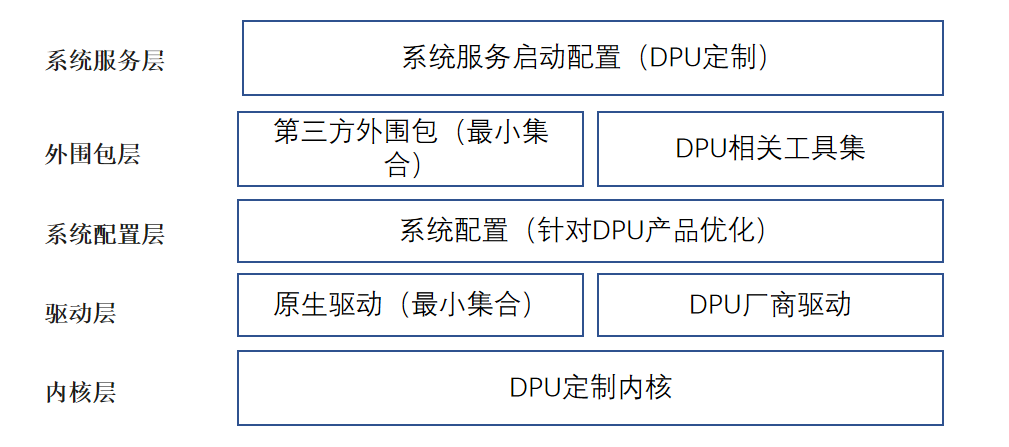DPU-OS Background and Requirements
Overview
In data center and cloud environments, Moore's Law has reached its limits, leading to a slowdown in the growth of general-purpose CPU computing power. At the same time, network I/O speeds and performance continue to rise, creating a growing disparity between the two. This gap highlights the inability of current general-purpose processors to meet the demands of network, disk, and other I/O processing. In traditional data centers, a significant portion of general-purpose CPU resources is consumed by I/O and management tasks, a phenomenon known as the "Datacenter Tax." AWS estimates that this tax can consume over 30% of a data center's computing power, and in some cases, even more.
The DPU was introduced to address this issue by offloading management, network, storage, and security tasks from the host CPU to dedicated processor chips. This offloading accelerates processing, reduces costs, and improves efficiency. Leading cloud providers like AWS, Alibaba Cloud, and Huawei Cloud have developed custom chips to handle these offloaded tasks, ensuring that 100% of data center computing resources are available for customer use.
The DPU market is experiencing rapid growth, driven by strong demand from cloud providers and big data applications. Numerous Chinese DPU startups have also entered the market with innovative products. This growth presents challenges for cloud and big data providers, who must integrate diverse DPU products, and for DPU manufacturers, who must adapt device drivers to customer-specified operating systems. openEuler, a leading open-source operating system in China, addresses these challenges by offering DPU-OS, a solution built on openEuler that bridges the gap between DPU manufacturers and customers. Furthermore, since DPUs rely on their OS to support service acceleration, DPU-OS requires performance optimization. By leveraging openEuler, DPU-related acceleration capabilities can be embedded into DPU-OS, fostering a robust DPU software ecosystem.
DPU-OS Requirements Analysis and Design
Current State of DPUs and OS Requirements
DPUs exhibit several key characteristics and challenges:
Limited general-purpose processing resources
DPUs are in the early stages of development, with hardware continuously evolving. Power constraints result in modest hardware specifications. Mainstream DPUs typically feature 8 to 24 CPU cores with limited single-core performance. Memory capacity ranges from 16 to 32GB, and local storage varies from tens to hundreds of gigabytes. The operating system running on DPUs must accommodate these constraints.
Varied DPU-OS installation methods
The diversity of DPU manufacturers and products has led to multiple installation and deployment methods. These include PXE network installation, USB installation, and custom methods such as host-delivered installation images.
High performance requirements
DPU application scenarios demand high performance. Compared to general-purpose server operating systems, DPU-OS may require specific kernel features or functional components. Examples include vDPA for device passthrough and live migration, vendor-specific driver support, seamless DPU process offloading, customized user-space data plane acceleration tools like DPDK/SPDK/OVS, and DPU management and monitoring tools.
Based on these characteristics, the following requirements for DPU-OS are proposed:
Ultra-lightweight DPU-OS installation package
Trim the openEuler system image to eliminate unnecessary packages and optimize system services to reduce resource overhead.
Customization support and tools
Provide customization configurations and tools to enable customers or DPU manufacturers to tailor the system. openEuler offers an ISO reference implementation.
Customized kernel and system for peak performance
Customize the kernel and drivers to deliver competitive features for DPUs. Enable hardware acceleration through tailored components and optimize system configurations for superior performance. Include DPU-related management and control tools for unified administration.
DPU-OS Design
Figure 1 Overall Design of DPU-OS
As illustrated in Figure 1, DPU-OS is structured into five layers:
Kernel layer: Customize the kernel configuration to remove non-essential features and modules, creating a lightweight kernel. Enable specific kernel features to deliver high-performance DPU capabilities.
Driver layer: Trim and customize openEuler native drivers, selecting the minimal required set. Integrate DPU vendor-specific drivers to natively support certain DPU hardware products.
System configuration layer: Optimize system settings through sysctl and proc configurations to ensure peak performance for DPU-related services.
Peripheral package layer: Customize and trim openEuler peripheral packages, selecting the minimal set. Provide a suite of DPU-related custom tools.
System service layer: Streamline native system service startup items to eliminate unnecessary services, minimizing runtime overhead.
This five-layer design achieves the goal of a lightweight, high-performance DPU-OS. While this is a long-term design heavily reliant on the DPU software and hardware ecosystem, the current phase focuses on trimming using openEuler's imageTailor tool.
For detailed steps on DPU-OS trimming, refer to the DPU-OS Tailoring Guide. For verification and deployment, consult the DPU-OS Deployment and Verification Guide.
Note:
Currently, DPU-OS leverages openEuler's existing kernel and peripheral packages, trimmed using the imageTailor tool to produce a lightweight OS installation image. Future development will integrate additional kernel and peripheral package features based on specific needs.
